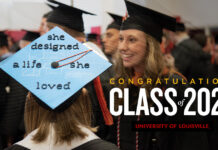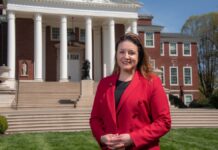In response to the Green Threads: Sustainability Across the Curriculum from the university calling for participation to incorporate sustainability into our curriculum, I offered a new course titled Media, Issues and Sustainability in the fall 2009 semester as a Special Topic elective for art majors. The 13 students who enrolled in the class were all art majors with one graduate student and 12 undergraduates. As a studio/lab course, the class met twice a week, three hours per session.
The scope of the course is unusually broad and covers many traditionally separate areas of studies and practices. Stated goals and objectives of the class are:
- Learn to build a Web site with html and css.
- Turn the Web into a platform for public art.
- Examine issues related to sustainability.
- Produce art using sustainable or recycled materials.
- Engage in intellectual discourse in new media, art, and ethics.
- Survey theory and philosophy related to global conservation.
- Study current green practices in technology, design and art.
- Use art as a medium of social action and positive change.
The course incorporated art, digital media, environmental studies, Web studies and ethical issues in a studio art course. Each student created a website and maintained a blog which served as the central structure of the various forms of content.
The class began with studying the ideas and practices of environmental thinkers and artists. The students read extensively the works of authors such as Henry Thoreau and Rachel Carson, and discussed ideas in environmental issues such as the principles of permaculture and the more recent book “Cradle to Cradle,” by William McDonough and Michael Braungart.
Next, the students studied artwork produced by environmental artists. The class discussed the works of such artists from around the world as Agnes Dunes, Patrick Dougherty and the Trashformaciones Group. Students then produced several art pieces using natural or recycled materials. These art projects ranged from drawing with water to building sculpture with drift wood to making photographs with natural dyes to designing a green roof with 2-liter bottles.
The class discussed various events and reports on the subject of sustainability. Besides following world events, such as the much anticipated UN Copenhagen Climate Change summit, the class also focused concerns on regional or local matters, for examples: mountain top coal mining, the city’s proposal of a no-idling zone, and exchanging information on local organic farms and health food markets.
Environmental ethics is a topic to which the class devoted much attention. The subject often involves social injustices. Disadvantaged people, communities or nations always bear the greater burdens, risks and hazards. This connection is apparent when examining such issues as clean water availability, energy consumption and carbon emissions, mountaintop removal, e-waste exporting and toxic dumping. The class learned that the remedies often involve complicated political and legal processes.
Throughout the course, students engaged in intellectual discourse to enhance their understanding of ethical responsibilities to others and the importance of conservation. Use of social media empowered students to express opinions and become accustomed to using the public forum for communication and social action.
The course was also complemented by a series of guest lecturers from various fields (art, geography, philosophy, history) who deepen the understanding of the subject matters. Topics ranged from sustainability and art to “Heremoval to urban drawings.
The course was an ambitious attempt to realize the holistic philosophy of education and to embrace the ethical turn in art. Students were challenged to think critically, to make connection in artistic, cultural and social issues, and to be passionate about the future of our planet. At a different level perhaps this was a new academic experience in which students have the opportunity to integrate classroom study with their everyday lives.

























